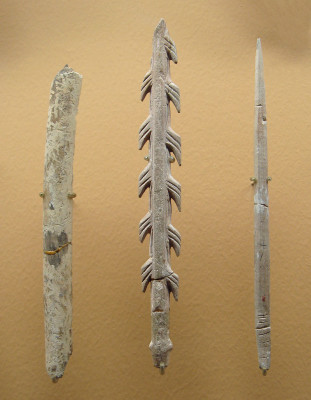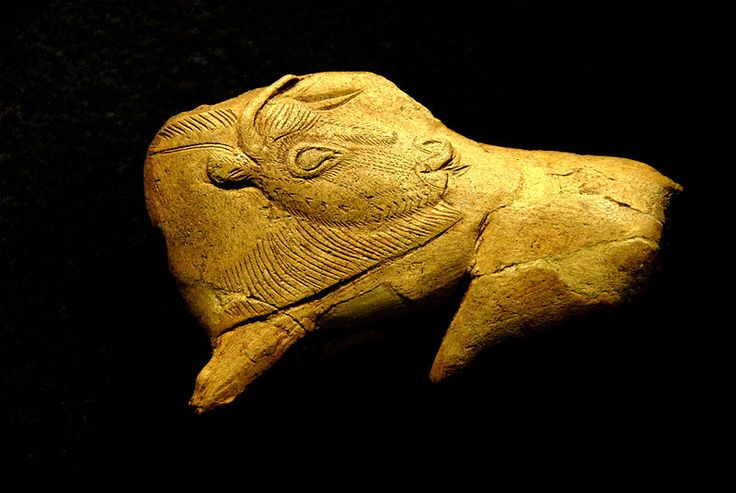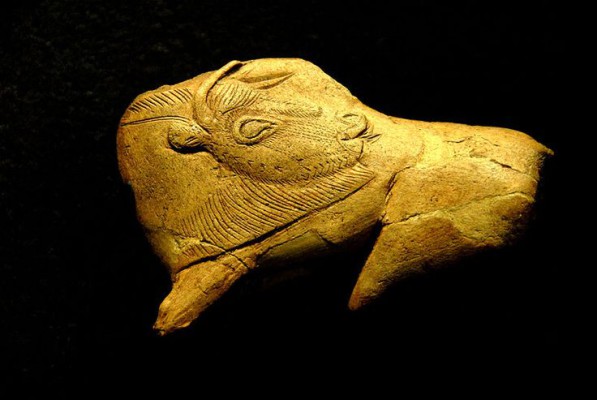A new archaeological study could show that the Channel Island of Jersey in the English Channel could date back as far as 14,000 years after researchers uncovered artifacts that could date back to the Ice Age.
If researchers prove the age of the artifacts they could make up the earliest known items in the United Kingdom. To date the earliest known artifacts in the UK are in Derbyshire where carvings were made in stone walls and on bones. The items found in Jersey are similar to these and include stone with line carvings on them. Three slabs have been excavated and are similar to carvings from the same era discovered in Germany as well as in the south of France.
The excavation has been named the Ice Age Island project and is based at Les Varines on Jersey for the past five years. (Mail Online)
One of the project leaders, Dr Chantal Conneller, says that the stones and carvings could be Magdalenian art, which is what was found in Germany and the south of France. They were found with other items including a group of burnt bones and could be part of a larger piece. Items like this are common at Magdalenian camp excavation sites and sometimes the stone slabs have carvings of animals and humans. The team is confident that the carved lines in the stone were put there on purpose and were probably made by stone tools. They would include small implements set in bone or antler so that they could chisel and bore holes and shapes.
Some of the images are abstract while others are of actual recognisable images. The team believes that they were not created to be admired but would have been undertaken simply for the act of doing them.
They also believe that many of the slabs might have been used in religious ceremonies to create good fortune. The Natural History Museum is now studying the artefacts and they have already identified that the stones aren’t native to the site so would have to have been brought there on purpose.
The Magdalenian culture occurred during the Upper Paleolithic period in Western Europe, from around 17,000 to 12,000 years ago. It gets its name from the La Madeleine, which is a shelter made of rock and is found in the Vézère valley, in the Dordogne region of France.
Originally termed “L’âge du renne” (the Age of the Reindeer) by Édouard Lartet and Henry Christy, the first systematic excavators of the type site, in their publication of 1875, the Magdalenian is synonymous in many people’s minds with reindeer hunters, although Magdalenian sites also contain extensive evidence for the hunting of red deer, horses, and other large mammals present in Europe toward the end of the last ice age. The culture was geographically widespread, and later Magdalenian sites have been found from Portugal in the west to Poland in the east. It is the third epoch of Gabriel de Mortillet’s cave chronology system, corresponding roughly to the Late Pleistocene.

There is extensive debate about the precise nature of the earliest Magdalenian assemblages, and it remains questionable whether the Badegoulian culture is, in fact, the earliest phase of the Magdalenian. Similarly, finds from the forest of Beauregard near Paris often have been suggested as belonging to the earliest Magdalenian. The earliest Magdalenian sites are all found in France. The Epigravettian is another similar culture appearing during the same period in Italy and Eastern Europe (Moldavia, Romania).
The later phases of the Magdalenian are also synonymous with the human re-settlement of north-western Europe after the Last Glacial Maximum during the Late Glacial Maximum. Research in Switzerland, southern Germany, and Belgium has provided AMSradiocarbon dating to support this. Being hunter gatherers, Magdalenians did not simply re-settle permanently in north-west Europe, however, as they often followed herds and moved depending on seasons.
By the end of the Magdalenian, the lithic technology shows a pronounced trend toward increased microlithisation. The bone harpoons and points have the most distinctive chronological markers within the typological sequence. As well as flint tools, the Magdalenians are best known for their elaborate worked bone, antler, and ivory that served both functional and aesthetic purposes, including perforated batons. Examples of Magdalenian portable art include batons, figurines, and intricately engraved projectile points, as well as items of personal adornment including sea shells, perforated carnivore teeth (presumably necklaces), and fossils.
The sea shells and fossils found in Magdalenian sites may be sourced to relatively precise areas of origin, and so have been used to support hypothesis of Magdalenian hunter-gatherer seasonal ranges, and perhaps trade routes. Cave sites such as the world famousLascaux contain the best known examples of Magdalenian cave art. The site of Altamira in Spain, with its extensive and varied forms of Magdalenian mobillary art has been suggested to be an agglomeration site where multiple small groups of Magdalenian hunter-gatherers congregated.
Want The Vintage News delivered straight to your inbox? Subscribe to our weekly newsletter!
In northern Spain and south west France this tool culture was superseded by the Azilian culture. In northern Europe a slightly different situation exists, with different variants of the Tjongerian techno-complex following it. It has been suggested that key Late-glacial sites in southwestern Britain also may be attributed to the Magdalenian, including the famous site of Kent’s Cavern, although this remains open to debate. Besides La Madeleine, the chief stations of the epoch are Les Eyzies, Laugerie-Basse, and Gorges d’Enfer in Dordogne; Grotte du Placard inCharente and others in south-west France.
Lead image credit pinterest

